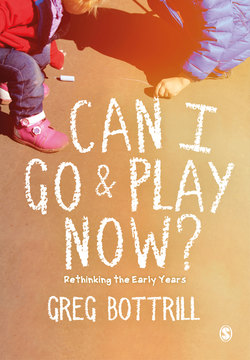Читать книгу Can I Go and Play Now? - Greg Bottrill - Страница 16
На сайте Литреса книга снята с продажи.
To achieve skills growth effectively, you need to know your children’s Next Steps
ОглавлениеThis is the key to enabling your faith in children to really show and take root in your classroom. This is perhaps the hardest thing to get right and the one that needs experimentation and perseverance. Children don’t necessarily learn in a linear way; they are not on a straight line from point A to point B. Their minds flip and switch, weave, retread, dip and soar across a year. They may show understanding one day but then the next day find the same thing challenging. Our role is to persist and repeat, and above all to give them opportunities to engage and re-engage. You will find their next steps sometimes appear from nowhere. At other times they are very clear. Children always bring their next steps into their learning – their voice is always telling you something.
Clear assessment is important here, whether it is recorded in a table, plotted on a diagram, or mentally noted. The one thing that is crucial is that you hold to the concept that each child is an individual with individual next steps. Red Group, Blue Group, Yellow Group approaches cannot work day in day out here. Yes, it can be useful sometimes to put children together in such a way, but in truth each child’s rate of development is unique to them. If you accept this and make each child’s next steps the focal point of your day, then your children will make progress – it’s almost impossible for them not to. In truth, you can find out a child’s next steps very quickly by interacting with them and talking, engaging them in an ad hoc assessment. Essentially, you need to find out what a child can do, then think – now what? If a child can consistently segment words and blend them is their Next Step not then to read by sight? If they can recognise numerals 0–10 with ease, is their Next Step not to be shown the patterns of numerals 11–20? If they cannot count 1:1, then what is stopping them? Is it their lack of ability to touch each object to be counted, is it their inability to say the numbers in the correct sequence? It goes beyond that they simply can’t count. We need to unpick the specifics and work on those so they can move forward.
In subsequent chapters we’ll explore this idea further, but for now ask yourself whether you are ready to open your own mind to moving away from what is a essentially a KS1/KS2 model of grouping children. Can you see that children are individuals, with their own unique voice, mind and developmental needs? I think that this is one of the most exciting ways of seeing children. Apply a sense of freedom to the children and yourself. After all, do we not see ourselves as individuals in the adult world? Are we not aware of our own distinct nature, are we not frequently driven by our own minds to try to be different from others? If I am due to go to a social event and someone happens to say, ‘Oh, I can’t wait for you to meet so-and-so. You’ll get on really well, they’re just like you’, then a petulant part of me will go out of my way to deliberately not get on with them because I see myself as individual. I don’t want to be like the next person – I want to be me. I think this analogy works with children, too. They exist deeply in their ‘me-ness’ and it is this that we need to recognise in the classroom – we need to meet them on the level of their individuality.
